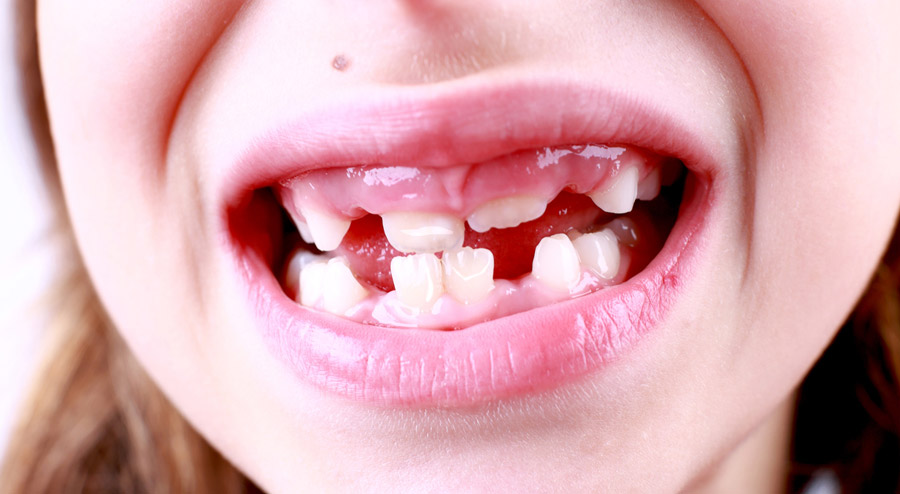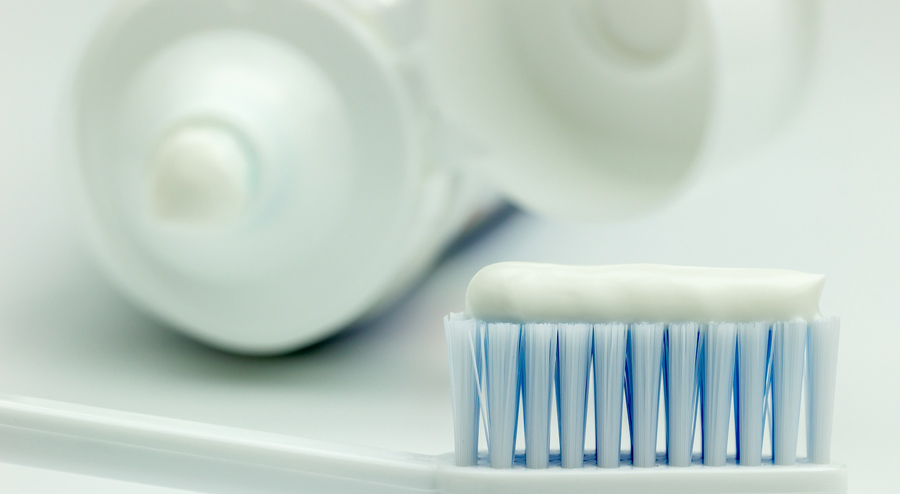The Most Common Causes of White Spots on Baby Teeth & How to Prevent Them

And as soon as the teeth are visible, the last thing any parent wants is to discover any visible problem on those new set of teeth. As these temporary or milk teeth stay with the children from their infancy until their early pre-teen years. Hence it is understandable why the appearance of a white spot or two is enough to send parents clamoring to find solutions.
There are two main causes of white spots on baby teeth, they are:
Cause 1
When dealing with white spots, fluorosis is milder and more likely option for white spots on new baby teeth. Characterized by its appearance as white streaks or sometimes appearing as tiny, irregular spots that are only visible during a close dental exam, fluorosis occurs when a baby gets too much fluoride while the teeth were developing beneath the gum surface.
And while fluoride is great when dealing with growing tooth as it is a protector and strengthener of the enamel. It also keeps enamel hard and healthy when it is combined with the other minerals that constitute the hard, outer shell that protects the inner tooth.
But like all things, too much of it is a bad thing. Using fluoride-rich products like toothpaste, oral rises,etc. and the swallowing, not spitting of fluoride products, are ways one can ingest the mineral.
The good news about fluorosis is that they do not cause weak spots on the teeth. The points where they appear are stronger than the enamel that surrounds them. Getting rid of them would involve learning proper brushing techniques as well as substituting fluoride-rich products with fluoride free ones.
Cause 2
Case two involves white spots as a symptom of tooth decay. Spots that come across as dry, chalky and feature at the gum line should be reported to the dentist immediately. These decay symptoms are caused by a lack of necessary features within the enamel. If they are left untreated, they will decay further turning yellow or brown and cause excruciating pain.
If treated early, the spots can be treated with a combination of applied topical fluoride and removal of any present plaque.
Furthermore, bad oral habits would need to be corrected,and fluoride-containing products with re-mineralizing capacities should be introduced to complete the recovery process.
For many people, a pertinent yet unanswered question is can teeth be too white?
And while beautiful white teeth are a thing to be desired, having white spots on the teeth is not something to be desired. To prevent having white spots on your teeth, it is important to avoid having too much of a good thing or too little of a good thing.
Avoid Too Much Fluoride
Fluorosis is a sign that too much of a good thing can become a bad thing. When a baby is allowed to consume too much fluoride, they stand the risk of developing white streaks or spots on the teeth. But with regards to fluorosis, it is not a bad thing as it means the spots on the tooth are stronger and not dangerous. Fluorosis only affects temporary/milk tooth and should eventually fade away when the permanent teeth upstage the temporary ones.
But for those who would rather see their kids avoid fluorosis all together, it is an avoidable condition. To begin, have a conversation with your baby’s dentist about how much fluoride they are expected to be getting. Identify the sources of fluoride that are open to your baby, some of these include the water that is being pumped into your house.
Remember, fluoride is not to be avoidedcompletely. You need to regulate the intake of fluoride in your toddler.
Some dentists recommend fluoride-free products like toothpaste or oral rinses until the child is comfortable to brush without swallowing the product. This is a reason why most children under six are not recommended to use oral rinses that contain fluoride. Most of them do not have the necessary reflexes to prevent swallowing most of the rinse.
Less Than Enough Fluoride
If too much of something could cause a problem, it should be known that too little of the same thing can also be a problem. In this case, it is referred to as early decay,and it is triggered when a child has not consumed enough fluoride when the baby teeth are growing within the gum. These teeth are softer and hence more susceptible to decay.
The decay is escalated by poor or completely absent brushing habits as bacteria is left to overgrow and cause acidic conditions that can damage the teeth.
The white spots that are seen near the gum line will eventually turn to either yellow or brown spots if left untreated.
In order to completely avoid these spots, good oral hygiene should be instituted as soon as your baby is born. Wipe your baby’s gums with a soft damp cloth after each meal before teeth erupt and use a baby-sized toothbrush and the age-appropriate toothpaste or gel to clean out baby teeth after they make their appearance.
Visit your dentist and find out if your child would benefit from fluoride containing paste or a fluoride-free one. These steps are key In laying the best foundation for your kid’s teeth.
Finally, should you see white spots on your child’s baby teeth, it is important not to panic. A trip to your dentist should solve any and every issue that may be plaguing your child’s teeth. White spot lesions are treatable when they are caught early and re-mineralizing the spots early is healthier for the child and easier than ending up with a mouth filled with fillings.
Relate Posts to Read:
Baby Bad Breath: Most Common Causes and Remedies


